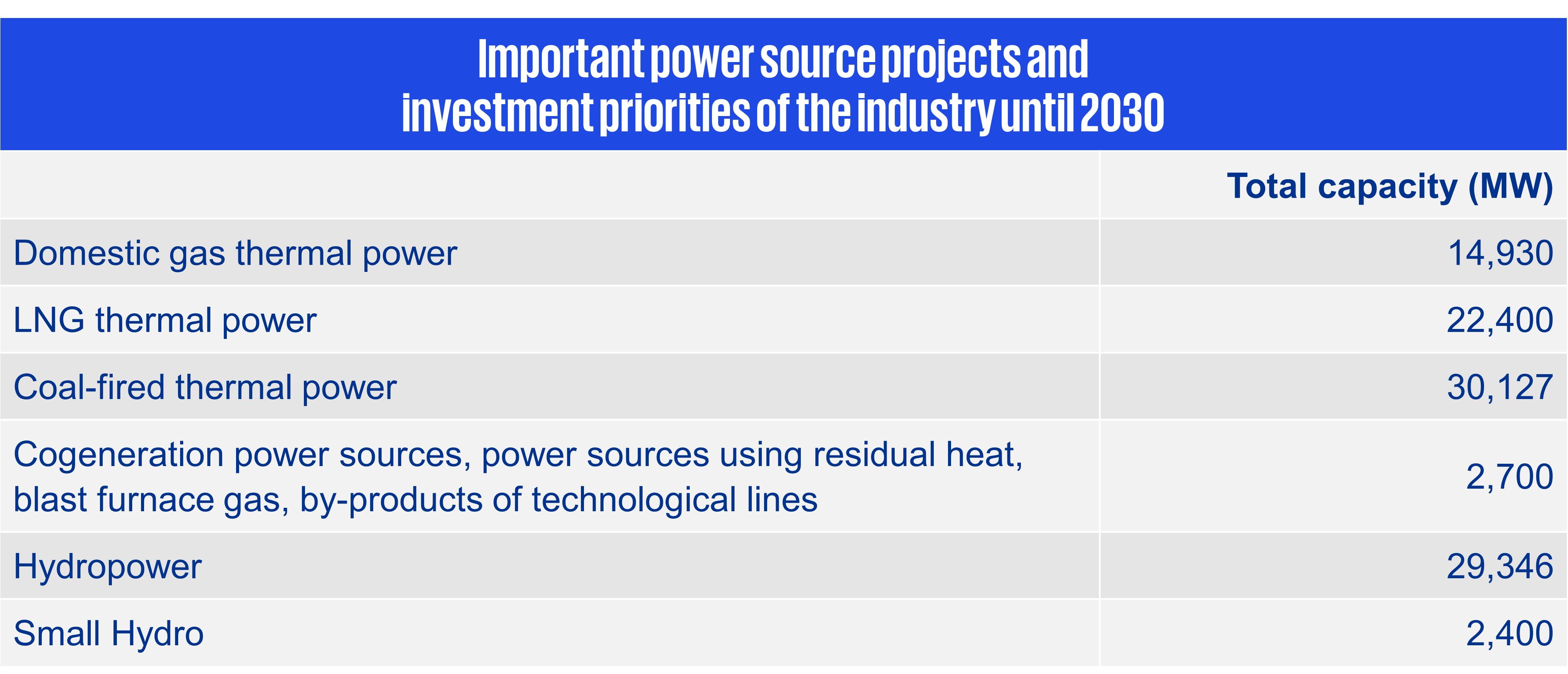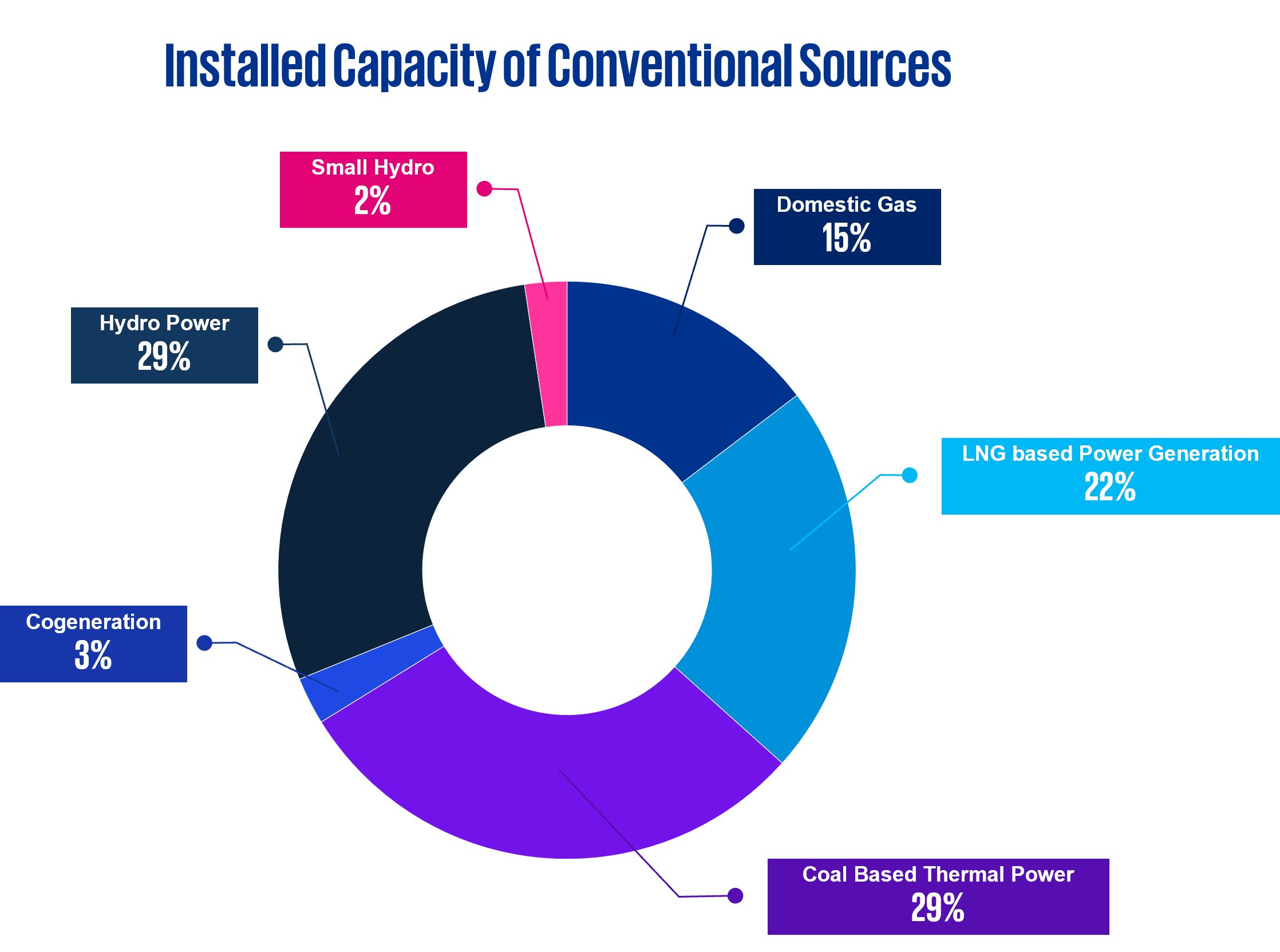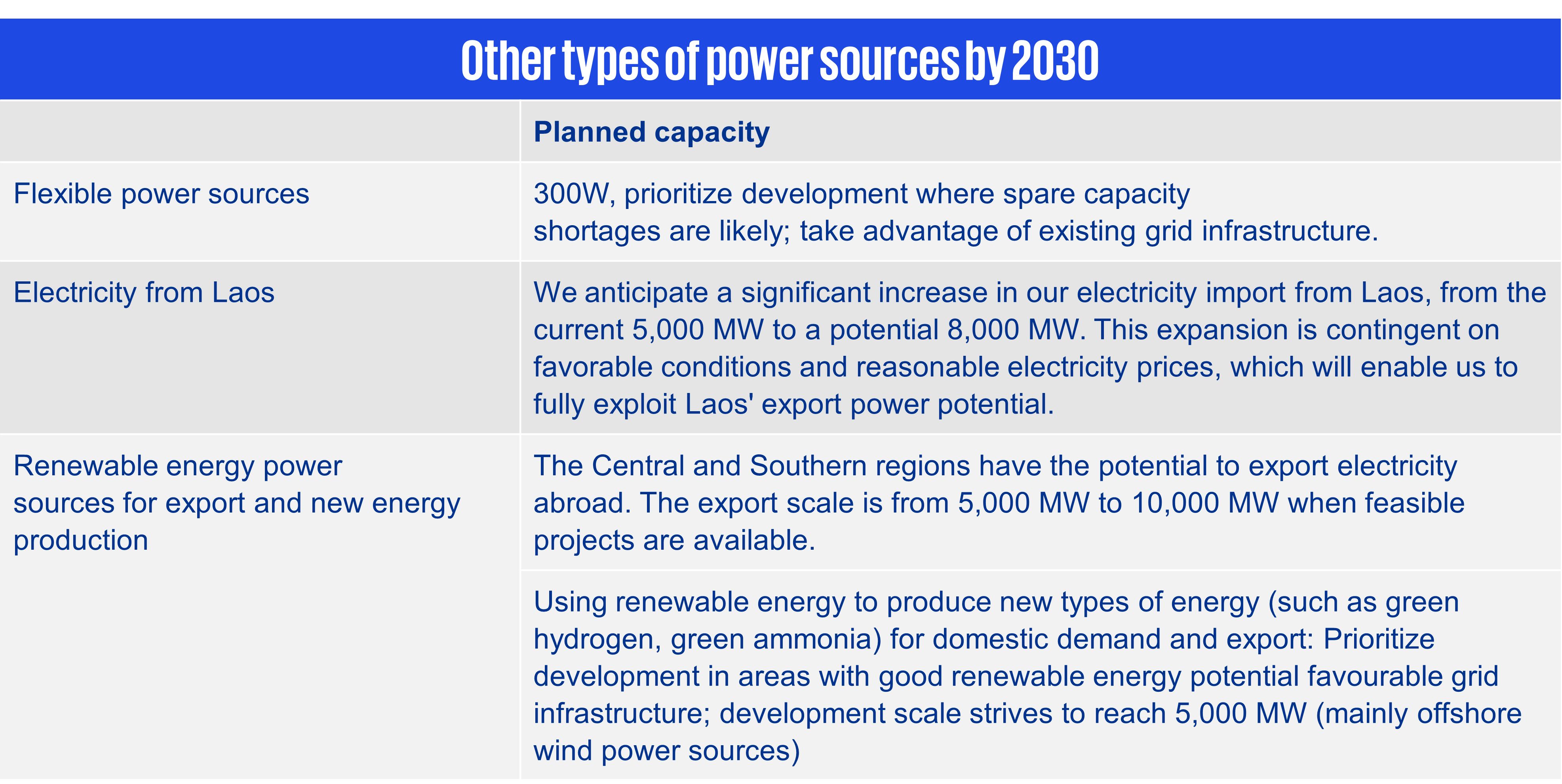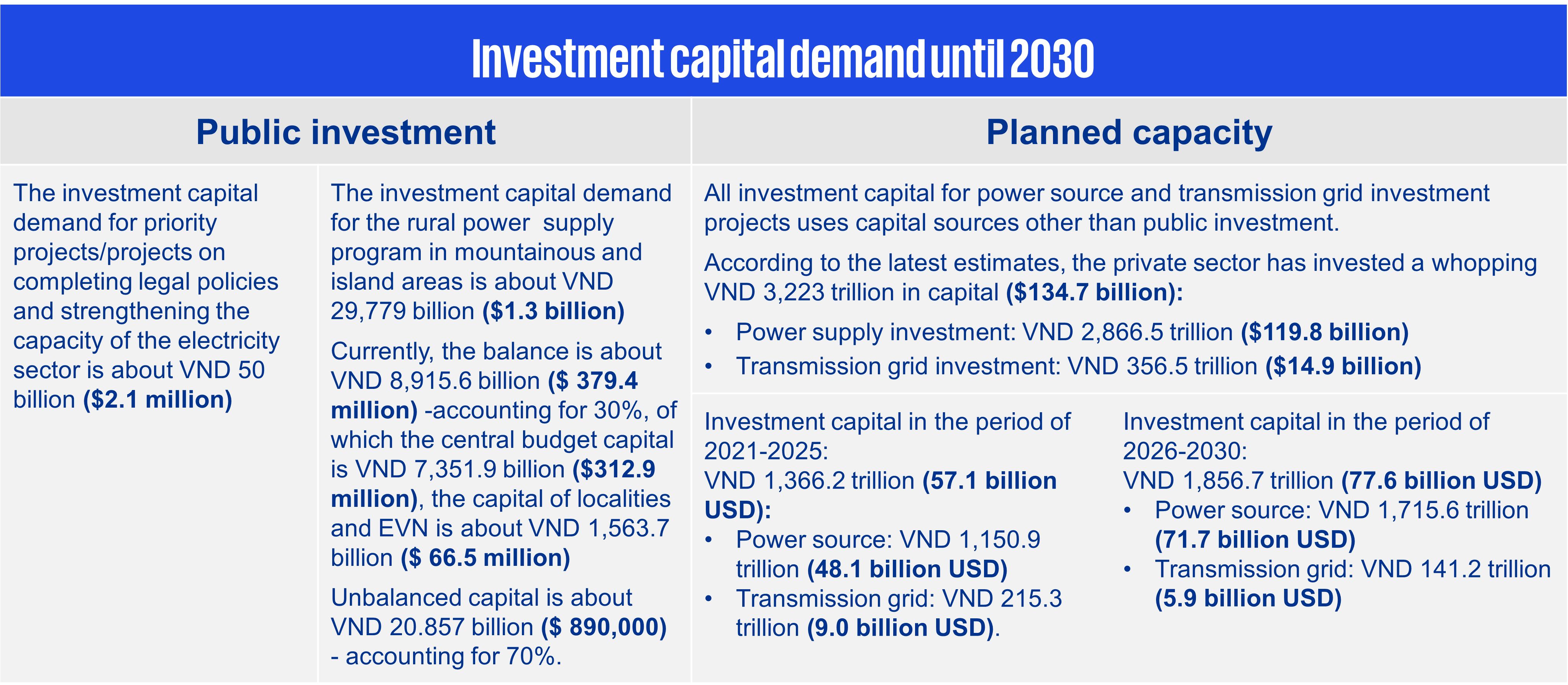1. Introduction
The Prime Minister issued Decision 262/QD-TTg on April 01, 2024, endorsing the plan to execute the National Electricity Development Plan from 2021 to 2030 (from now on referred to as “Implementation Plan”). This plan translates the broader objectives outlined in PDP-8 into actionable steps and determines the investment priorities for comprehensive power system development for the next seven years.
The following draft provides an overview of the implementation plan, as well as our perspective on its impact on the development of electricity infrastructure in the country.
2. Implementation Plan Overview
2.1. Conventional Sources of Generation
The Implementation Plan outlines in greater detail the planned capacity additions and the status of implementing conventional sources by 2030. These figures underscore the sector's dynamic expansion and diversification efforts.
2.2. Capacity addition of Renewable Energy Sources
Key project list details are outlined across various appendices, reflecting a comprehensive strategy to diversify energy sources and enhance sustainability. Below is the target capacity addition of different renewable sources envisaged by 2030.
2.3. Other Power Sources by 2030
This Implementation Plan outlines a strategic initiative to import electricity from Laos, starting with an initial capacity of 5,000 MW, potentially expanding to 8,000 MW, contingent upon favorable conditions and negotiating reasonable pricing. This move aims to harness Laos's significant potential as an electricity exporter, reflecting a broader strategy to diversify energy sources and enhance energy security. The Plan also emphasizes the development of renewable energy sources for the production of new green hydrogen and green ammonia.
2.4. Regional Power Transmission and Grid Link Projects
The Plan highlights the strategic importance and priorities of transmission grid projects, including those that enhance connectivity with neighbouring countries. Key areas of focus include:
a. The implementation of newly constructed transmission grid projects and additional investment works to improve the grid's capacity and operational control.
b. Establishing synchronous connections for imported power projects from neighboring countries like Laos and China, integrating these into Vietnam's power system seamlessly.
c. Facilitating the synchronous connection of renewable energy projects (with a voltage level of 220 kV or higher), including onshore wind, biomass, and waste-to-energy sources, with the national electricity system will support the country's transition to a more sustainable energy mix.
2.5. Development of Industrial Ecosystem and Services on Renewable Energy
The Plan will establish two inter-regional renewable energy industry and service centers by 2030. These centers are envisioned to serve as hubs for the renewable energy sector, fostering innovation and manufacturing and providing comprehensive services to support the growth and sustainability of renewable energy sources in Vietnam. The first center, located in the Northern region, is projected to focus on offshore wind power with a capacity of ~ 2,000 MW and onshore and coastal wind power of ~ 500 MW.
The second center, located between the South Central and Southern regions, is expected to house offshore capacity of c. 2,000-2,500 MW and onshore and coastal wind power capacity of 1,500-2,000 MW.
2.6. Rural, Mountainous, and Island Power Development Programs
The program aims to power pumping stations, supporting both agricultural activities and residential electricity needs. It extends to providing electricity to select islands (including Con Dao). It spans 43 provinces in regions identified as border areas and locations facing extreme difficulties, including Dien Bien, Lao Cai, and Ha Giang. Land Use Demand by 2030 & Investment Capital Demand until 2030.
The total land requirement is estimated to reach c. 90.3 thousand hectares. Please refer to the information below for a breakdown of public and private capital needed to implement the plan.
2.7. Policy Direction and Strengthening of Legal Framework
The Implementation Plan clarifies strategic initiatives being designed to overhaul and improve the legal and regulatory framework of the power sector to foster a more sustainable, efficient, and competitive energy landscape. The specific legal framework and policy guidance under development include:
a. Develop a pricing framework for importing electricity from Laos to ensure cost-effective energy imports.
b. Create price brackets for different types of power sources for transparency and fairness.
c. Establish a direct power purchase and sale mechanism to streamline processes and promote market competitiveness.
d. Develop mechanisms to encourage distributed/rooftop solar power projects focused on self-production and self-consumption, supporting rooftop solar growth.
e. Develop a policy framework for trading carbon credit.
f. Amend electricity law and law for economic and efficient use of electricity.
3. Conclusion
The implementation plan is an important step forward. It clarifies capacity planning and emphasises balanced power system development. Priority has been accorded to developing and strengthening the transmission system, facilitating the evacuation of power from resource-rich regions to demand centres. The implementation plan showcases Vietnam's government's commitment to equitable development and comprehensive decarbonization of the electricity grid.
Although the plan anticipates a modest capacity addition of approximately 2600 MW of rooftop solar systems, the proposed development of a mechanism focused on self-production and utilization, as well as the conclusion of the DPPA framework, will be vital in harnessing the full potential of behind-the-grid distributed generation in Vietnam.
The development of a carbon credit framework and amendments to electricity law will be crucial for facilitating the seamless integration of diverse power sources operating under different commercial to effectively cater to the country's escalating electricity demand.
Clarity on the procurement framework for power shall be critical for the realization of pipeline capacities.
With the finalisation of the implementation plan, we expect to see more transaction activity as developers would need capital to construct the pipeline assets.
Related contents
Connect with us

Tran Van Trung
Partner
Tax Advisory
Head of Power
KPMG in Vietnam











